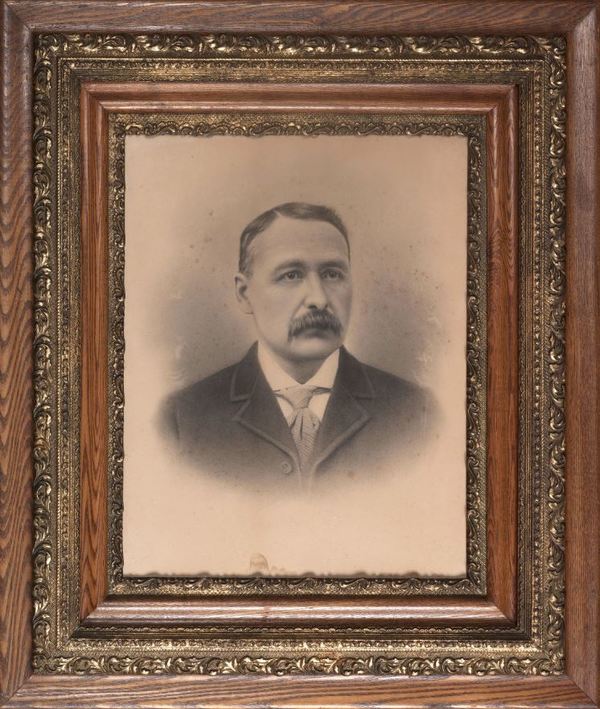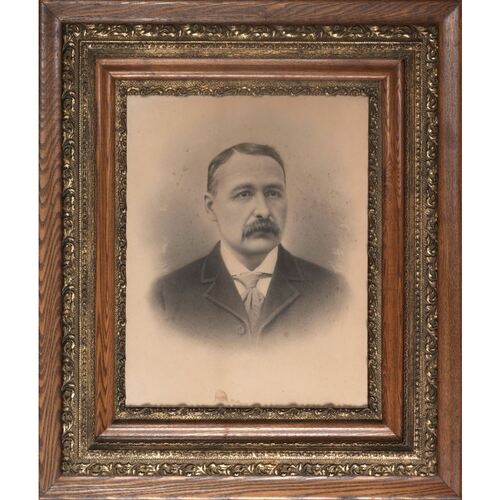
Source: Link
GIDNEY, ANGUS MORRISON, teacher, journalist, and poet; b. 4 May 1803 at Jemseg, N.B., son of Joshua Gidney and Phoebe Morrison; m. Experience Beals, and they had one son and three daughters; d. 20 Jan. 1882 at Bridgetown, N.S.
As a child Angus Morrison Gidney moved with his parents to a farm east of Bridgetown where he devoted his early years to self-education and farming. In his late teens he began to contribute prose and verse to the periodical press of the province, meanwhile embarking on a teaching career, mainly in Wilmot and Annapolis townships, in which he was engaged for the next two decades. In the primitive single-room schools of the era preceding free schooling in the province Gidney would have as many as 50 pupils at one time. In the spring of 1843 he became editor of the Novascotian (which Joseph Howe* had sold in 1841) and assistant editor in the autumn of that year when William Annand bought the newspaper. He was also at this time parliamentary reporter for both the Novascotian and Annand’s Morning Chronicle, established in 1844.
In August 1845 he severed his connections with these two newspapers and purchased from Alexander Lawson* the Yarmouth Herald, then the only newspaper in Nova Scotia west of Halifax. As its managing editor he vehemently supported reform in the Nova Scotian government, the paramount issue at that time being the struggle for responsible government, which finally became a reality in February 1848. Titus Smith*, the eminent botanist and scholar, contributed a weekly column on agriculture to Gidney’s newspaper until shortly before his death in 1850. Gidney appears to have temporarily abandoned journalism in 1851, moving to Sandy Cove, Digby County, where he resumed teaching, while contributing articles and poetry to the periodical press of the Maritime provinces.
On 30 Jan. 1843 the Novascotian had carried the first chapter of an historical novel by Gidney entitled “The refugee’s daughter: a legend,” published under the pseudonym “Clifton Hughes, a Novascotian.” Publication of the novel ceased abruptly on 17 April 1843 after ten instalments, probably because Gidney’s new duties as editor of the Novascotian prevented him from completing the work at this time. Fourteen years later all 44 chapters of Gidney’s highly romanticized tale of a loyalist army officer and his young daughter were published in the Liverpool Transcript, between 5 Feb. and 24 Dec. 1857. Though he had originally planned to issue the novel in a single volume he ultimately decided against the plan, “the times not being auspicious for such an enterprise.” The product of a vivid imagination stimulated by extensive reading in history and literature, the story’s setting ranges from the bleak coastal settlements of Nova Scotia across the Atlantic to the court of St James, with a series of improbable events taking place in rapid succession.
In 1859 Gidney began to edit the Digby Acadian, a weekly newspaper established by his son, Ingraham, who two years later also purchased the Bridgetown Register. The elder Gidney, following the discontinuation of the Acadian in 1862, joined his son at the Register, renamed the Free Press, in 1863. Father and son continued to publish it until 1872. Throughout this decade the Gidneys’ newspaper violently opposed confederation, denouncing it regularly in the strongest terms and calling for its repeal. During his years as a journalist in Halifax and Yarmouth, Gidney had firmly supported Howe and his political beliefs, but when Howe joined forces with Sir John A. Macdonald* and his government in 1869 Gidney did not hesitate to condemn him as a traitor to the province.
A figure of formidable appearance, Gidney served as sergeant-at-arms of the Nova Scotia House of Assembly during the Liberal régime from 1868 to 1878. He was postmaster in Bridgetown for a brief period but lost the position, probably because of politics, in 1865. He was apparently a voracious reader and derived considerable pleasure from presenting lectures on literary and historical topics to local reading societies.
Described as a “teacher, journalist and poet . . . [with] powers far above mediocrity,” Gidney was highly regarded in the community, where he gave devoted service to the local Baptist church and actively campaigned for the temperance movement. In 1835 he had published anonymously a temperance tract, The effects of alcohol; a poem descriptive and moral. As a political journalist he expressed himself with facility and conviction, freely employing caustic satire with marked success. His poetry, often published under a pseudonym, embraced a wide range of topics, from the death of a daughter to reflections on Henry Ward Beecher and a tribute to Halifax. No doubt influenced by English poets of the previous century, his style is stilted and characterized by florid language and frequent allusions to classical and literary subjects.
In addition to his contribution to the Novascotian, 1843–45, Morning Chronicle (Halifax), 1844–45, Yarmouth Herald (Yarmouth, N.S.), 1845–51, Acadian (Digby, N.S.), 1859–61, Register (Bridgetown, N.S.), 1861–63, and Free Press (Bridgetown), 1863–72, Angus Morrison Gidney was the author of the novel “The refugee’s daughter: a legend,” first published in part in the Novascotian from 30 Jan. to 17 April 1843, then in full in the Liverpool Transcript (Liverpool, N.S.) from 5 Feb. to 24 Dec. 1857.
PANS, RG 14, 70. Dominion annual register, 1882: 340. R. J. Long, Nova Scotia authors and their work, a bibliography of the province (East Orange, N.J., 1918). Morgan, Bibliotheca Canadensis. G. E. N. Tratt, “A survey and listing of Nova Scotian newspapers with particular reference to the period before 1867” (ma thesis, Mount Allison Univ., Sackville, N.B., 1957). D. C. Harvey, “Newspapers of Nova Scotia, 1840–1867,” CHR, 26 (1945): 279–301.
Cite This Article
Shirley B. Elliott, “GIDNEY, ANGUS MORRISON,” in Dictionary of Canadian Biography, vol. 11, University of Toronto/Université Laval, 2003–, accessed January 14, 2026, https://www.biographi.ca/en/bio/gidney_angus_morrison_11E.html.
The citation above shows the format for footnotes and endnotes according to the Chicago manual of style (16th edition). Information to be used in other citation formats:
| Permalink: | https://www.biographi.ca/en/bio/gidney_angus_morrison_11E.html |
| Author of Article: | Shirley B. Elliott |
| Title of Article: | GIDNEY, ANGUS MORRISON |
| Publication Name: | Dictionary of Canadian Biography, vol. 11 |
| Publisher: | University of Toronto/Université Laval |
| Year of publication: | 1982 |
| Year of revision: | 1982 |
| Access Date: | January 14, 2026 |



